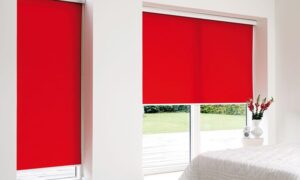In the realm of architecture and home design, windows play a pivotal role not just in aesthetics but also in functionality and energy conservation. The divergent approaches between European and American windows underscore a deeper cultural and practical distinction that reflects the differing priorities on either side of the Atlantic. As global trends lean towards sustainability and energy efficiency, the differences between American and European windows become a focal point for discussions on innovation, tradition, and the future of home design.
Main Characteristics of European windows
European windows, often known as “tilt and turn” windows, have distinct characteristics that set them apart from their American counterparts. Firstly, the functionality of European windows is more versatile. They can tilt inwards from the top for ventilation, or open fully from the side, providing flexibility for different weather conditions and personal preferences. This dual-action functionality is a hallmark of European design, enhancing both security and usability.
Another key feature of European windows is their energy efficiency. Typically, they come with double or even triple glazing, combined with airtight seals, which significantly reduces energy loss. This is not only environmentally friendly but also economically beneficial in the long run due to lower heating and cooling costs. Moreover, the materials used in European windows, such as PVC, wood, or a combination, contribute to their insulating properties and longevity.
Lastly, European windows often exhibit a minimalist and modern aesthetic, aligning with contemporary European architectural styles. They are designed to blend seamlessly with the building’s exterior and interior, providing a sleek and elegant look. The focus on design and functionality reflects the European approach to window manufacturing.
Main Characteristics of American Windows
In contrast, American windows typically adhere to a different set of standards and styles. One of the most popular types in the U.S. is the double-hung window, which allows both the upper and lower sashes to move up and down. While this design provides good ventilation and is ideal for traditional American homes, it lacks the tilt function for easy cleaning and controlled ventilation that European windows offer.
Energy efficiency is also a consideration in American windows, but the approach can be different. While advancements have been made, the emphasis on energy efficiency is not as pronounced as in European models. American windows may come with double glazing, but the comprehensive energy-saving features like those found in European windows are less common.
Additionally, American windows are often designed with a focus on cost-effectiveness and practicality, which can affect materials and overall build quality. While there are high-quality options available, the range in quality and insulation capacity can be broader compared to European standards.
Comparing European and American Windows
When comparing European windows to American ones, the differences lie primarily in functionality, energy efficiency, and design philosophy. European windows offer more in terms of versatility and thermal insulation, which can be attributed to stricter energy regulations in Europe. The tilt and turn mechanism, superior sealing, and advanced glazing options highlight the European commitment to energy conservation and user convenience.
In contrast, American windows cater to different aesthetic tastes and architectural styles, with a focus on simplicity and accessibility. The variation in design, such as the double-hung and sliding sashes, reflects a broader range of climates and housing designs in the U.S. Ultimately, the choice between European and American windows depends on individual needs, architectural styles, and environmental considerations. European windows might be the preferred choice for those prioritizing energy efficiency and modern design, while American windows might better suit those looking for traditional styles and cost-effective solutions.
European tilt and turn windows – summary
European and American windows differ significantly in terms of design, functionality, and energy efficiency. European windows, known for their “tilt and turn” capability, offer greater versatility and superior energy efficiency with their double or triple glazing and airtight seals. They align with modern architectural styles and emphasize environmental sustainability. In contrast, American windows, such as the double-hung types, prioritize traditional aesthetics and cost-effectiveness, offering varying levels of energy efficiency and a focus on practicality over versatility.
Read More From Techbullion



































